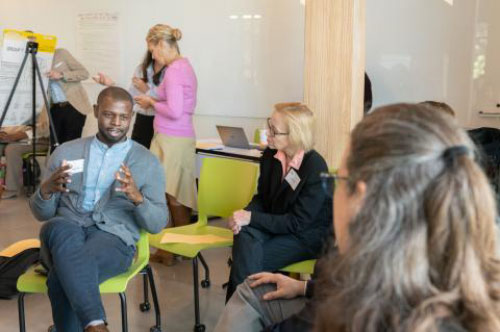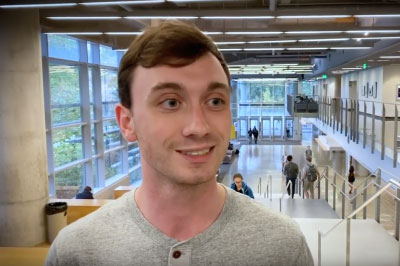Appreciative Inquiry
Through hundreds of sessions of appreciative inquiry — a planning model that leverages the power of positive conversation and success stories to build upon an institution's core capabilities — thousands of Yellow Jackets shared their aspirations for Georgia Tech. They provided leadership with the ideas that would help shape a new mission, vision, and related goals and tactics for the Institute by answering the question: What's your biggest dream for Georgia Tech?
What's your dream for Georgia Tech?
What’s your biggest dream for Georgia Tech?
The rationale behind asking all Institute stakeholders this question was to unearth common themes that would help all Yellow Jackets come together to build a common dream and direction for the future.
Video: What is your dream for Georgia Tech?
Bringing Data Alive Through Analysis
To get to the core of the stakeholder feedback so that the strategic plan could be carefully shaped according to the input from such a vast community, meticulous collection and analysis of the data was performed with the help of Georgia Tech’s Institutional Research and Planning unit.
Video: Strategic Plan - Making data come alive with analysis
Visioning By The Numbers
Visioning by the Numbers
Through some 110 appreciative inquiry sessions, more than 5,700 stakeholders provided feedback for the new strategic plan during the Visioning phase.
2,635
undergrads, grads, and postdocs
1,110
staff members
862
faculty members
713
alumni
259
members of the Georgia Tech advisory board
89
parents
121
government, industry, community, and K–12 partners
Visioning Session Testimonials
Visioning Session Testimonials
To ensure that the end product would be a true reflection of the entire community’s aspirations for Georgia Tech, soliciting feedback from all Institute stakeholders was key to the strategic planning process.

—Surabi Srinivasan
Student, H. Milton Stewart School of Industrial and Systems Engineering

—Michael Toney
Director of Academic Administration

—Jackson Caruso
Student, School of Public Policy
Vision to Action
Vision to Action
The timeline for the planning process was divided into three stages: Visioning (September 2019-January 2020), Goal Setting (February-June 2020), and Implementation (June 2020-the present). A Vision for Georgia Tech 2020-2030 — Inclusive Innovation for a Better Future will launch in Fall 2020.
Sharing the New Narrative
Draft Launched
Following the collection of feedback from the appreciative inquiry sessions during the Visioning stage, a draft of the foundational narrative, vision, theme, and values and beliefs that ultimately shaped the strategic plan was released to the Georgia Tech community in February 2020. This part of the process allowed for all stakeholders to have the opportunity to submit feedback for consideration in the refining of the Institute’s strategy.


Focusing on Core Themes
Working groups formed
In the second phase of the strategic planning process, working groups were formed to focus on six strategic themes that resulted from the Visioning phase.
Each group was comprised of internal and external stakeholders with specific knowledge, skills, and responsibilities in each of the six strategic impact theme areas: Amplify Impact, Champion Innovation, Connect Globally, Expand Access, Cultivate Well-Being, Lead by Example. Working groups were tasked with delivering goals, objectives, and measures of success around each theme.
Planning for Action
Mobilization begun
With clear goals and tactics outlined in the second phase, units and program leaders have begun mobilization of the Institute plan by creating plans for how their respective groups will contribute to the Institute-level strategy.



